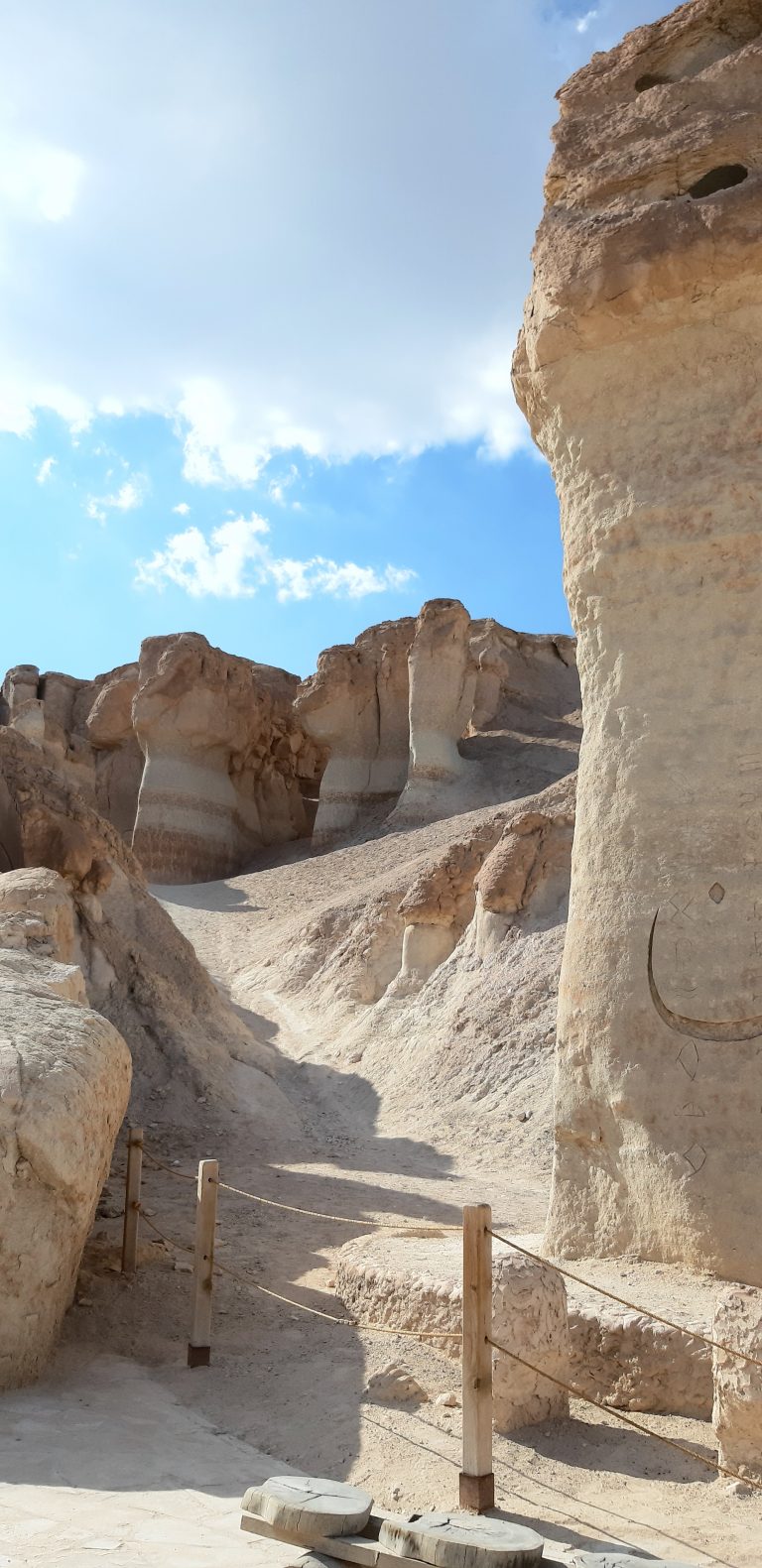Dammam and Surroundings: The Charm of Saudi Arabia
What was once the small coastal settlement of Dammam has transformed into a modern metropolis with the discovery of oil reserves in 1938.
The city boasts a significant seaport located on the eastern coast, right next to Bahrain. Currently, it is only a commercial port, but the goal is to turn it into a passenger terminal for cruises in the Red Sea to showcase Saudi Arabia, still largely unknown from a tourist perspective.
Marjan Island
Marjan Island
Dammam has a rich cultural heritage, is situated by the desert, and has a special charm as a modern city. A very characteristic spot is its “Marjan Island”, connected to the mainland (and therefore reachable by car), where a spiral-shaped tower sits in the center. Visitors can ascend the tower to an altitude of 30 meters above sea level to view Dammam and take a souvenir photo. Around the tower, there are areas for outdoor sports and playgrounds for children with cement seating, and visitors can also lie on the grass.
No visit would be complete without a tour of the Heritage Village, where the past of Saudi Arabia meets the heritage of its regions, covering an area of 21,000 square meters. Its beautiful architecture hides a rich history inside. Here, tourists can immerse themselves in Saudi civilization, exploring both its past and present.
Share Al-Hob market
A typical feature of Arab countries is the bazaar: the picturesque Share Al-Hob market in Dammam offers local souvenirs, jewelry, textiles, antiques, and much more. Located on 11th Street south of King Abdulaziz Street, it is open every day from 4:00 PM to 1:00 AM. Situated in the heart of the city, it is locally known as the “market of love” due to the many jewelry stores lining its outer streets. Couples visit here to pick out wedding and anniversary gifts from the sparkling shop windows.
An interesting day trip is to the city of Khobar, about half an hour by car. It is also a modern and well-maintained city. The evening is the perfect time to take a stroll along its Corniche. Here, you’ll see Arab families taking advantage of the cooler evening temperatures, gathering on the lawns or enjoying drinks at local cafes. Remember, alcohol is banned in Saudi Arabia, so cocktails, wine, and alcoholic beers are not served.
Water Tower
Khobar Corniche
One of the first things that will catch your eye is the city’s symbol: the Water Tower. Inspired by water, symbolizing life and prosperity, it is situated in a prime location overlooking the Persian Gulf. It is currently being renovated to create a true marvel that will seamlessly integrate into the community, employing sustainable and energy-efficient design principles.
A must-see is the Ithra Museum in Khobar, built near the site where oil was first extracted in 1983 (Ithra means “enrichment”) and is a world-class cultural center. It spans 80,000 square meters and hosts five galleries dedicated to contemporary Middle Eastern art, Saudi culture, Islamic art, the natural history of the Arabian Peninsula, and archival exhibitions. Additionally, the museum houses a massive spiral library, a theater, and a children’s museum. The heart of the museum is occupied by a symbolic plant placed where the first oil field was discovered.
Ithra Museum
Ithra Museum
Ithra Library
Another notable attraction is the Sultan bin Abdulaziz Scientific and Technological Center (SciTech), covering an area of 21,700 square meters. It was established in 2000 as a global scientific center to assist researchers, students, and enthusiasts in the fields of science and technology. Temporary exhibitions on communication are held here, and scientific books are available to broaden technical knowledge. The center features a scientific dome that can accommodate up to 193 spectators, where IMAX films are shown, allowing viewers to experience events almost in a lifelike manner.
A full-day excursion can be dedicated to the Al-Ahsa oasis, considered one of the most important natural attractions and registered as a UNESCO World Heritage site in 2018. Here, fresh water streams have encouraged human settlements and agricultural exploitation, especially of dates and lemons, since prehistoric times. Additionally, thousands of sheep, goats, cows, and camels make Al-Ahsa one of the kingdom’s most important agricultural producers.
Al-Ahsa oasis
Al-Ahsa oasis
The caves are about two hours’ drive from both Dammam and Khobar. The base of the mountain is approximately 14 km² and consists of reddish sedimentary rocks. The temperature of the caves remains semi-stable and moderate throughout the year, around 20°C, accompanied by a fresh air flow from inside the cave to the outside. Various types of caves extend as ground grooves, while others are cavities formed by weathering and erosion.
Qaisariah Souq
Qaisariah Souq
The caves are located about 15 kilometers northeast of Al-Hofuf. Here, you’ll find rice and date processing industries, cement production, weaving, and royal stables for horse breeding. The traditional Qaisariah Souq completes the day’s excursion for some shopping. The high wooden ceilings and narrow corridors were designed to improve ventilation on hot summer days. Payment can be made with credit cards or their local currency, SAR. Founded in 1822, locals claim it has been around for centuries. To the west is Al-Ghawār, one of the world’s largest oil fields.
It’s important to note that to visit Saudi Arabia, you need an electronic visa, which can be easily purchased on the website www.ivisa.com, and a passport valid for more than six months beyond its expiration. Saudi Arabia has been ranked as the 27th happiest country in the world. It is a country that has all the Arab charm but is still not heavily visited by tourists, allowing you to immerse yourself in its life and culture gently, respecting its traditions while enjoying all the allure and splendor of its wealth.
Visit Cruising Journal to stay updated on news and updates from the world of cruises.












